What does “MEMORY FULL” mean on my Kenwood Receiver?
- DDaniel RamirezSep 12, 2025
If your Kenwood Receiver displays “MEMORY FULL”, it means you have reached the maximum storage limit of your iPod/iPhone.
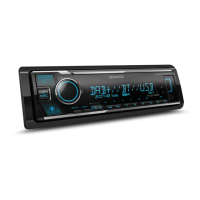
What does “MEMORY FULL” mean on my Kenwood Receiver?
If your Kenwood Receiver displays “MEMORY FULL”, it means you have reached the maximum storage limit of your iPod/iPhone.
How to fix no sound on my Kenwood Car Receiver?
If you cannot hear any sound from your Kenwood Car Receiver, first, adjust the volume to the optimum level. If the issue persists, check the cords and connections to ensure they are properly connected.
Why is the radio reception poor on my Kenwood Car Receiver?
Poor radio reception on your Kenwood Car Receiver can be due to a loose antenna connection. Ensure the antenna is firmly connected. Also, static noise while listening to the radio can affect the reception.
Why can't I control the Bluetooth audio player connected to my Kenwood Car Receiver?
If you cannot control the connected Bluetooth audio player with your Kenwood Car Receiver, check whether the connected Bluetooth audio player supports Audio/Video Remote Control Profile (AVRCP).
What does “CHECK APP” mean on my Kenwood Receiver and how do I fix it?
If your Kenwood Receiver displays “CHECK APP”, the Spotify application is not connected properly or the user is not logged in. End the Spotify application and restart it, then log in to your Spotify account.
What to do if source cannot be selected on Kenwood Receiver?
Check the [SOURCE SELECT] setting.
Why is there echo during phone calls on my Kenwood Receiver?
If you are experiencing echo or noise during phone conversations on your Kenwood Receiver, try adjusting the microphone unit’s position. You can also check the [ECHO CANCEL] setting.
Why is the phone sound quality poor on my Kenwood Receiver?
If the phone sound quality is poor on your Kenwood Receiver, try reducing the distance between the unit and the Bluetooth device. Additionally, move the car to a location with better signal reception.
What does “DAB ANT ERR” mean on my Kenwood Receiver and how do I fix it?
If your Kenwood Receiver displays “DAB ANT ERR”, check the DAB antenna connection. If you are using a passive antenna (without a booster), set [DAB ANT POWER] to [OFF].
What does “NO MUSIC” mean on my Kenwood Receiver and how do I resolve it?
If your Kenwood Receiver displays “NO MUSIC”, it indicates that the connected device (USB/iPod/iPhone) does not contain playable audio files. Ensure the device has supported audio files.
| DIN size | 1 DIN |
|---|---|
| Impedance | 4 Ω |
| Clock mode | 12h/24h |
| Output power | 50 W |
| RDS features | TI |
| Product color | Black |
| Volume control | Rotary |
| Frequency range | 30 - 15000 Hz |
| iPod Direct Control | Yes |
| Disc types supported | No |
| Audio output channels | 4.0 channels |
| Equalizer bands quantity | 13 |
| Signal-to-Noise Ratio (SNR) | 68 dB |
| Audio formats supported | AAC, FLAC, MP3, WAV, WMA |
| Display type | LCD |
| Display digits | 13 digits |
| Illumination color | Blue |
| Display number of lines | 1.5 lines |
| USB version | 2.0 |
| Bluetooth range | 10 m |
| Bluetooth version | 4.2 |
| USB port position | Front |
| Line outputs (RCA) | 2 |
| USB connector type | USB Type-A |
| USB ports quantity | 1 |
| FM band range | 87.5 - 108 MHz |
| Supported radio bands | AM, FM, LW, MW |
| Preset stations quantity | 24 |
| Operating temperature (T-T) | -10 - 60 °C |
| Depth | 100 mm |
|---|---|
| Width | 182 mm |
| Height | 53 mm |
| Weight | 600 g |
Explains how to interpret manual symbols, warnings, cautions, and references.
Details the physical layout, controls, and indicators of the unit's faceplate.
Instructions for how to perform a factory reset of the unit's settings.
Steps to disable the demo mode upon initial setup or factory reset.
Guide to configuring the unit's time and date settings.
Procedure for adjusting other available settings while the unit is in standby.
Details various settings like display, tuner, audio sources, and system preferences.
Instructions for selecting the speaker crossover configuration (2-way or 3-way).
Explains the technology and benefits of Digital Audio Broadcasting.
Guides on finding, storing, and selecting digital radio stations and ensembles.
Configuration options for tuner modes, PTY search, announcements, and time synchronization.
Instructions for finding, storing, and selecting AM/FM radio stations.
Configuration options for tuner modes, mono/stereo, regional settings, and traffic info.
How to search for radio stations based on program categories like Speech or Music.
Steps for connecting and playing audio files from USB drives.
Guide for connecting Apple iPod and iPhone devices via USB for audio playback.
Managing music sources and selecting control modes for iPod/iPhone.
How to navigate folders, lists, and search for files on USB and iPod devices.
Techniques for Skip Search and Alphabet Search to locate files efficiently.
Requirements and steps to install the Spotify app and log in.
How to connect your device and begin playing music from Spotify.
Managing playback, skipping tracks, repeat, and random play functions.
Finding songs and stations within the Spotify application.
How to mark songs as favorites for easy access on your Spotify account.
Connecting a portable audio player via AUX and starting playback.
Customizing the name displayed for the AUX input device.
Controlling the car receiver using the KENWOOD Remote smartphone app.
Settings for using the KENWOOD Remote app with iOS or Android devices.
Listening to internet radio streams via TuneIn Radio applications.
Pairing devices and understanding supported Bluetooth profiles like HFP and A2DP.
Instructions for connecting the external microphone for hands-free calls.
Steps for the first-time connection and pairing of a Bluetooth device.
Enabling automatic Bluetooth pairing when connecting an Apple device via USB.
Managing phone connections, calls, and basic operations.
Handling incoming calls, answering, rejecting, and ending calls.
Adjusting microphone gain, noise reduction, and echo cancellation for calls.
Initiating calls via call history, phonebook, or voice recognition.
Setting up automatic call answering based on a time delay.
Accessing contacts, searching, and dialing numbers directly.
Making calls using voice commands with the connected phone's feature.
Saving frequently used contacts to memory buttons for quick dialing.
Making calls using stored contacts assigned to memory buttons.
Managing device connections, selecting phones/audio, and deleting paired devices.
Checking the connectivity and compatibility of Bluetooth profiles.
Playing music from Bluetooth audio players connected to the unit.
Streaming audio from Apple iPod/iPhone devices using Bluetooth.
Requirements and steps to connect Alexa, including app installation and account creation.
Connecting via Direct Link (URL/QR code) or Manual Pairing through the Alexa app.
Interacting with Alexa for voice commands, music playback, and information.
Adjusting subwoofer levels and selecting equalizer presets or custom EQ.
Customizing sound profiles by adjusting individual equalizer bands.
Selecting pre-defined sound settings tailored to different music genres.
Fine-tuning bass response, loudness compensation, and subwoofer output.
Applying sound processing like Space Enhance and Sound Realizer for audio effects.
Configuring speaker parameters and frequency crossovers for optimal sound.
Advanced crossover configurations for tweeter, mid-range, and woofer speakers.
Optimizing the sound stage by adjusting speaker delays for better audio imaging.
Adjusting listening position, speaker distance, and individual speaker gain.
Using the auto-calculation feature for time alignment based on speaker distances.
Customizing illumination colors for different zones (All, Zone 1, Zone 2).
Adjusting screen brightness and setting the dimmer for day and night.
Configuring how text information, like song titles, is displayed.
Enabling display features like a visual level meter and showing the clock when off.
Managing the demo mode and selecting initial display colors.
Guide for installing the unit into the car's dashboard using a mounting sleeve.
Step-by-step instructions for the overall installation process.
Inventory of components included for the installation of the unit.
Instructions for installing the unit without a standard mounting sleeve.
Steps to detach the unit from the car using extraction keys.
Wiring for external components like speakers and amplifiers via output terminals.
Detailed overview of the unit's wiring harness connections for power, speakers, and controls.
Guide for fitting the supplied DAB antenna to the vehicle.
Recommendations for optimal placement of the film antenna for signal reception.
Detailed steps for installing the antenna, including cleaning and placement.
General placement guidance and safety considerations for antenna installation.
Managing antenna wires, securing cables, and reattaching interior trim.
How to care for the unit, including cleaning the faceplate and connector.
Where to find firmware updates, compatible items, and other information.
List of supported audio file types for USB playback.
Details on supported USB devices, iPod/iPhone models, Spotify, and Alexa.
How to cycle through different information displayed on the unit.
Solutions for general problems like no sound, power issues, or incorrect display.
Solutions for problems with USB and iPod connectivity, file recognition, and errors.
Solutions for Spotify app connection problems and user login issues.
Resolving problems with Bluetooth pairing, call quality, audio playback, and device detection.
Solutions for Alexa connection, response, and voice input problems.
Technical details for DAB, FM, and AM radio reception performance.
Technical details for USB standards, file system, and media compatibility.
Specifications for maximum output power, impedance, and tone control bands.
Details on operating voltage, installation size, and net weight.
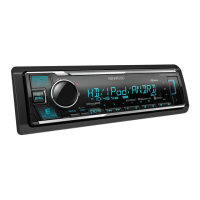
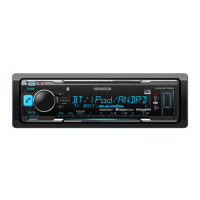
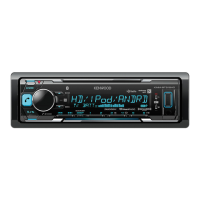


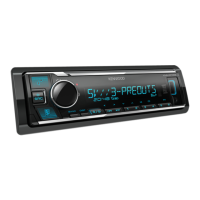




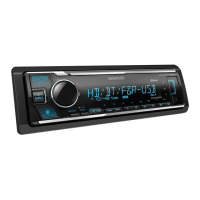
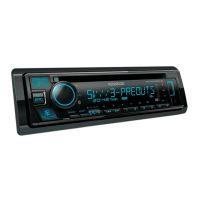
